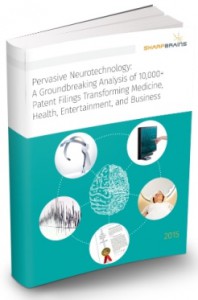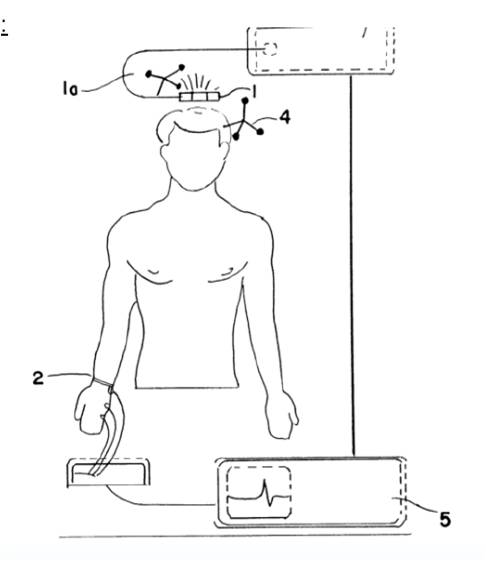Computer modeling meets Transcranial Magnetic Stimulation (TMS): Key Neurotech Patent #17
This is a very interesting 2004 patent, assigned to Brainlab AG, outlining a way to use computer modeling to target brain stimulation.
U.S. Patent No. 6,827,681: Method and device for transcranial magnetic stimulation.
- Assignee(s): Brainlab AG
- Inventor(s): Phillipp Tanner, Andreas Hartlep, Henrik Wist, Kerstin Wendicke, Thomas Weyh
- Technology Category: Transcranial Stimulation
- Issue Date: December 7, 2004
SharpBrains’ Take:
The ‘681 patent claims broad coverage over the use of computer modeling in targeted brain stimulation techniques. Two broad claims directed towards stimulating specific brain areas compliment each other, with one claim reciting a limitation of generating a simulation model of the induction device and the other claim reciting a limitation of a simulation model of the head. The specification is very short (seven illustration sheets and four pages of written material), which may raise questions around adequately support claimed subject matter. However, the importance of computer-modeling technologies for improving spatial precision in medical procedures, evidenced in fields such as robotic surgery, along with the broad coverage of the ‘681 patent over such models as they apply to brain stimulation techniques are among the factors making the ‘681 patent a key non-invasive neurotechnology patent.
Abstract:
The invention relates to a method for stimulating specific areas of a brain using an induction device, comprising the following steps: recording the spatial structure of the head, in particular the brain; generating a simulation model of the induction device; and arranging the induction device relative to the head such that a specific area of the brain determined by means of the simulation model of the induction device is stimulated by a current flowing in the induction device, as well as to a method for stimulating specific areas of a brain using an induction device, comprising the following steps: recording the spatial structure of the head, in particular the brain; generating a simulation model of the head; and arranging the induction device relative to the head such that a specific area of the brain determined by means of the simulation model of the head is stimulated by a current flowing in the induction device, as well as to a device for stimulating specific areas of a brain using an induction device connected to a marker.
Illustrative claim 1. A method for stimulating a specific area of a brain using an induction device, comprising the following steps:
a) recording the spatial structure of the brain;
b) generating a simulation model of the induction device; and
c) arranging the induction device relative to the head using the simulation model of the induction device, such that a specific area of the brain can be stimulated by a current flowing in the induction device.
 To learn more about market data, trends and leading companies in the digital brain health space –digital platforms for brain/ cognitive assessment, monitoring and enhancement– check out this market report. To learn more about our analysis of 10,000+ patent filings, check out this IP & innovation neurotech report.
To learn more about market data, trends and leading companies in the digital brain health space –digital platforms for brain/ cognitive assessment, monitoring and enhancement– check out this market report. To learn more about our analysis of 10,000+ patent filings, check out this IP & innovation neurotech report.



